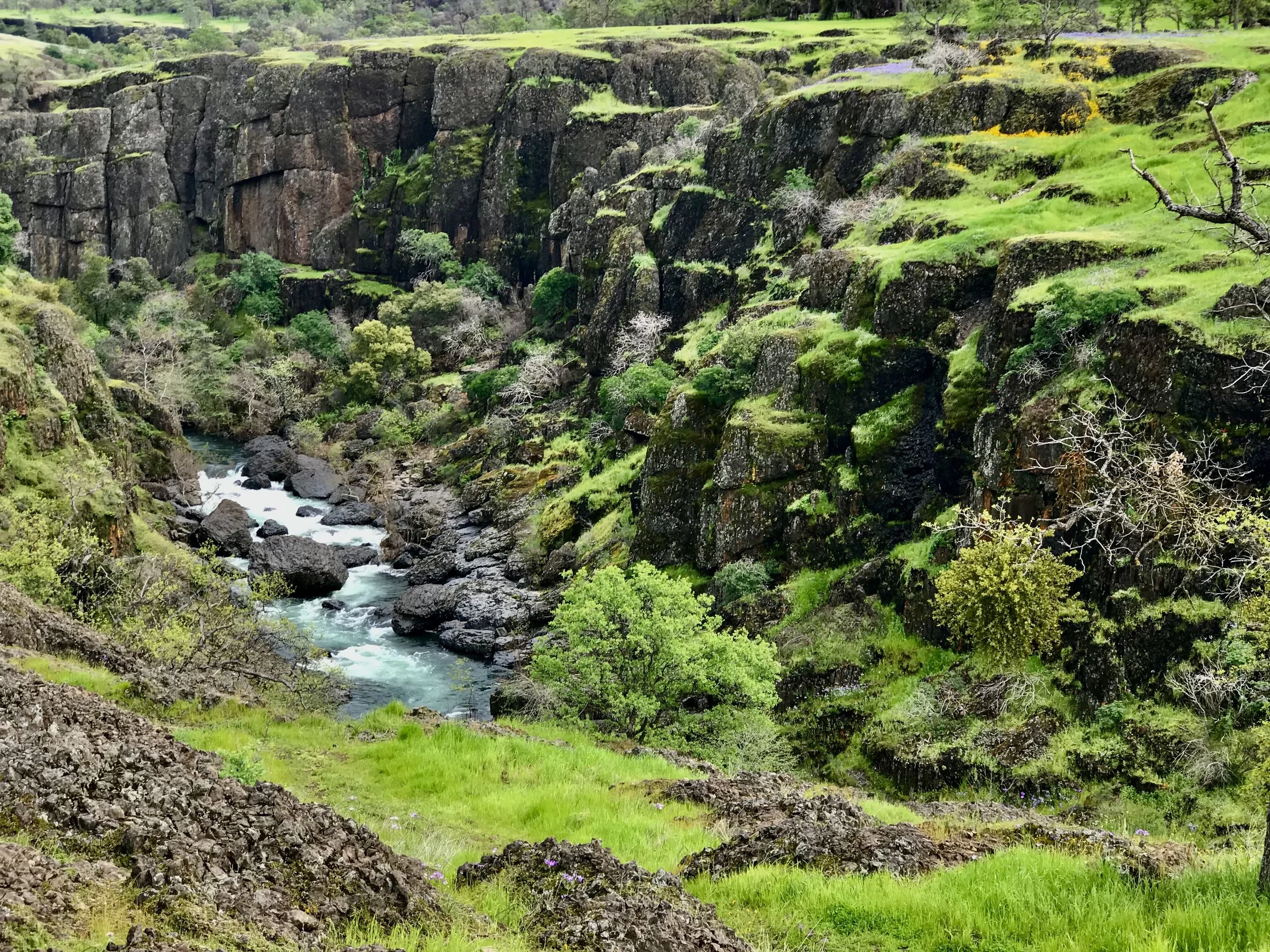Restoring the Flow: Iron Canyon Fish Passage on Big Chico Creek
Long before the creek ever saw a fishing rod or a concrete ladder, it was home to the Mechoopda people. This stretch of Big Chico Creek was a vital lifeline, providing food, water, and a connection to the land for thousands of years. The Mechoopda, like other Indigenous peoples of the region, understood this waterway in a way that modern science is only beginning to appreciate. While many associate Northern California with Ishi—the last of the Yahi—this part of the world shares in the deep history of tribes who lived in harmony with the creek long before European settlement altered the landscape.
By the 20th century, Big Chico Creek had already been reshaped by logging, ranching, and development. But one event in particular changed the creek forever: the 1929 San Francisco earthquake caused a section of Iron Canyon to collapse. A massive rockslide fell into the creek, creating a barrier so steep and impassable that anadromous fish species—salmon and steelhead—could no longer reach the upstream spawning grounds they and the people of this region had relied on for millennia.
Humans, for the first time in this watershed’s history, had to intervene to give the fish a fighting chance. In the late 1950s, the state’s Fish and Game Department and other agencies built a concrete fish ladder at Iron Canyon. Its purpose was simple: help fish navigate this newly created, nearly insurmountable barrier and reach the cold, clean waters upstream where they could spawn. Over the years, maintaining the ladder became a challenge. Floods, shifting rocks, and wear and tear left portions broken and unreliable, sometimes requiring creative interventions, like physically moving fish upstream—a task in some places so difficult it earned stories of helicopters being used to transport fish for spawning.
Despite these heroic efforts, the system has always been fragile. The ladder can fail during low or high flows, and habitat upstream is only accessible when passage is open. Conservation groups like CalTrout, along with other local and state partners, have kept the project alive for decades.
Now, CalTrout has developed a solution that could change everything. By placing a crane at the side of the collapsed canyon, they are able to remove the rocks that sloughed off in the 1929 earthquake and carefully reconstruct the streambed, essentially replicating what it looked like before the quake. For the first time in a century, this work could allow anadromous fish to return to their historic upstream spawning grounds, restoring a connection between the creek and its fish that has been lost for generations.
Groundbreaking on the project occurred just a few weeks ago, a moment celebrated by the community and conservation partners as a historic step forward. But shortly after that milestone, CalTrout was notified that funding from the Department of Fish and Wildlife had been cut, leaving the project’s continuation in jeopardy. Even with the innovative engineering solution in place and the commitment of local organizations, the loss of financial support threatens to stall the project before it can fully restore fish passage.
The Iron Canyon Fish Passage Project is more than a ladder, rocks, or cranes—it’s an effort to heal a river, honor a cultural legacy, and give future generations of salmon and steelhead a fighting chance. It’s a reminder that some rivers, while resilient, still need a little help from us humans to flow as they were meant to.
Right now, the project’s success depends on advocacy and action. The organizations working tirelessly to restore the creek—CalTrout, the Mechoopda Tribe, and other partners—cannot do it alone. They rely on government support to complete this work and secure the long-term health of Big Chico Creek. You can make a difference. Write to your U.S. Senators, your Congressman, and even the President to voice your support for funding this critical restoration project. Let them know that protecting our waterways, preserving native fish populations, and honoring the legacy of the Mechoopda people matters. Your voice can help ensure that Iron Canyon remains a place where salmon and steelhead can thrive for generations to come.
As efforts like the Iron Canyon Fish Passage Project remind us, healthy rivers are at the heart of every great fishing experience. The creeks and rivers of Northern California tell stories that run deeper than the pools we cast into—stories of resilience, restoration, and the ongoing connection between people and the water.
At Bock Fly Fishing, we believe in celebrating that connection every time we step into the river. Whether you’re learning the fundamentals, exploring new waters, or chasing your first steelhead, our guided trips are about more than just catching fish—they’re about understanding and appreciating the wild places that make fly fishing so special.
Join us on the water, and experience Northern California’s incredible fisheries for yourself.
Book your next adventure
If you feel that tug—that deep, gut-level pull—you’re in good company. Maybe it’s a wild steelhead testing your patience, or a trout peeling line like it’s got a vendetta. The best way to experience their story? Waist-deep in moving water, feeling every ounce of fight.
Want to experience it for yourself? Book a trip and chase steelhead, trout with me—feel the tug firsthand.
Stay in the loop—join the mailing list for honest fishing reports, hatch updates, and tips that actually make a difference on the water.
Check out our clinics and resources too—from first casts to advanced tactics, we’ll help you get more out of every day on the river.
Because every cast tells a story—and when you know what’s on the other end of your line, it matters even more.



